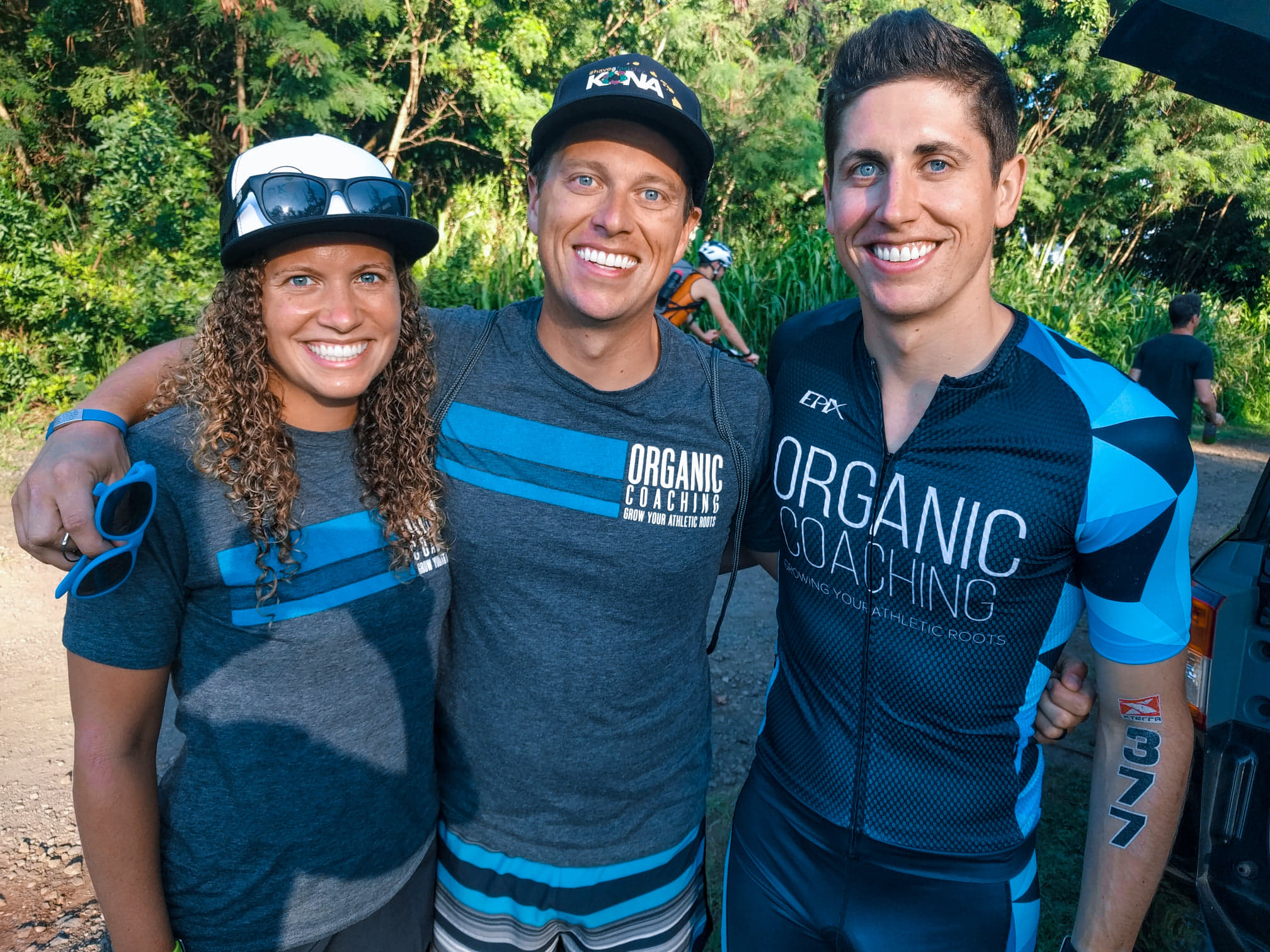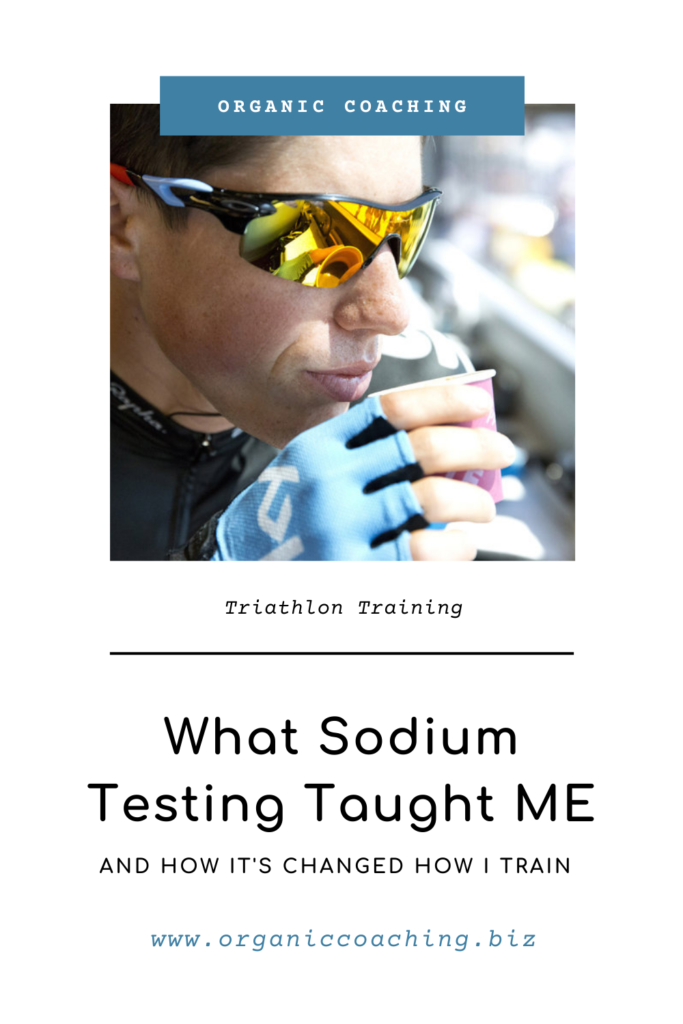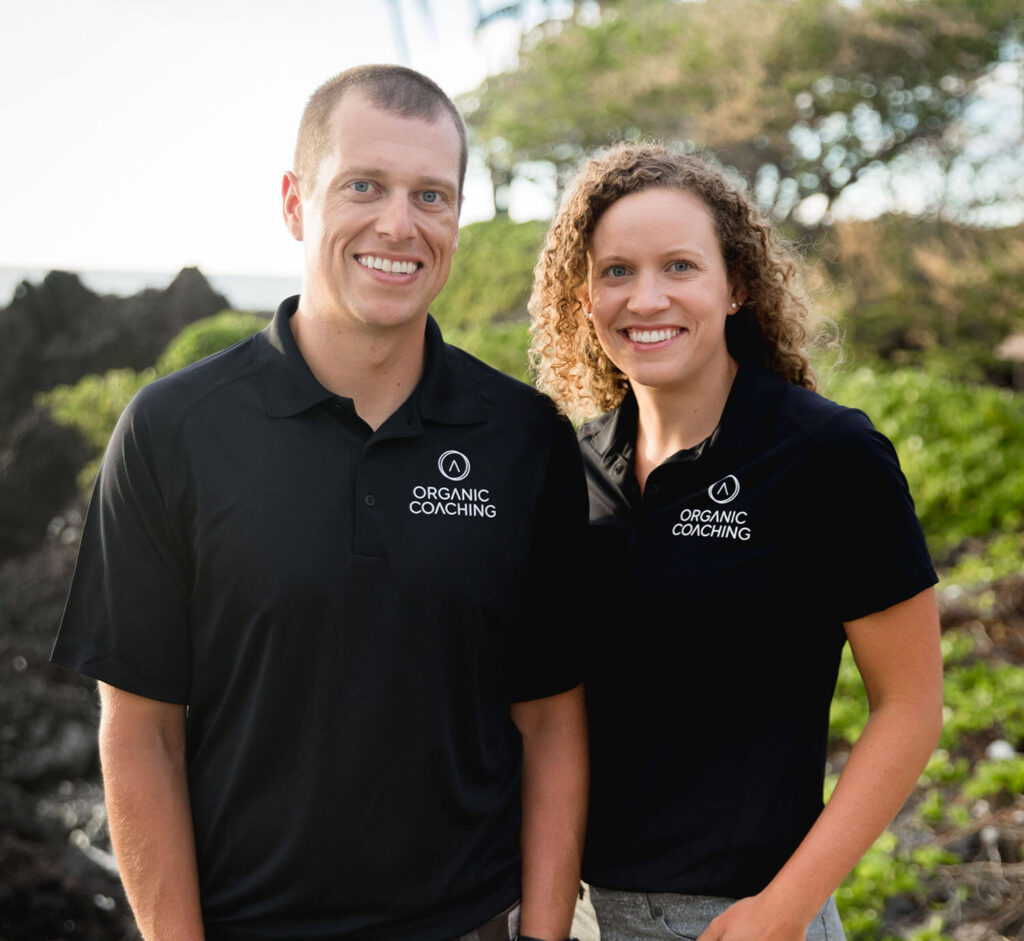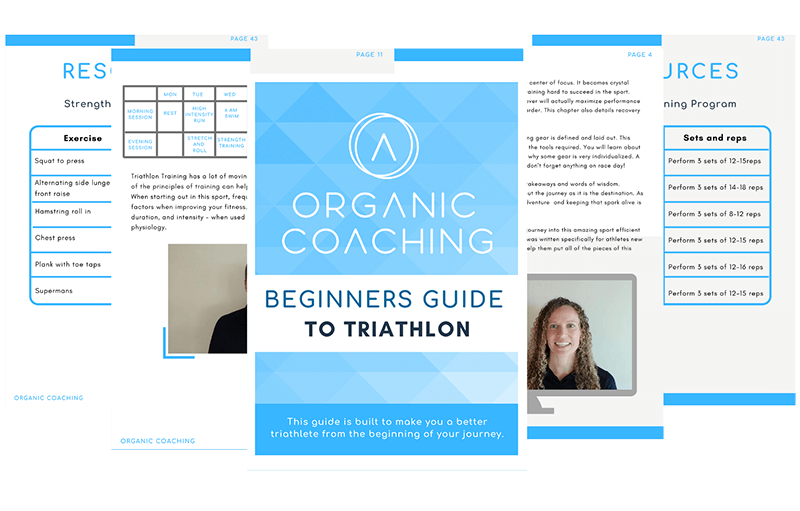
If you’re like me, the thought of sodium testing might be low on your to-do list for triathlon training. However, after recently having my sodium testing done, I’ve learned a few key things that have really changed how I manage my sodium levels. If you’ve been on the fence about whether or not sodium testing is for you, then this article is for you!
Coach Carly and I got the chance to go to the University of Akron in Ohio to get our sodium levels tested. The testing itself was quick and painless. A couple of electrodes are placed on the skin to simulate exercise. A small amount of sweat is collected and then analyzed to measure the sodium content. In all the total process took about 30 minutes. Our sodium loss rate is genetically determined and changes little throughout our lifetime. So one test is all that is suggested.
I have been racing triathlons for almost a decade now and for much of that time, a salt replacement was not at the forefront of my mind. I personally have never suffered muscle cramps in training or racing. So prior to 2014 I just assumed what I was taking in was sufficient. Little did I know that salt had a lot more to do with performance than just cramps. Then in 2014, I raced my hottest race up to that point, Eagleman 70.3, and the heat forced me to face new adversity.
While I was not getting any cramps I had lost interest in Gatorade during the run and switched to water. I quickly started to feel weighed down. Simply put sodium plays an important role in the absorption of water and nutrients in the gut. When I switched to water my body found it difficult to absorb the nutrition and fluid I was consuming. While I ended up spending more time on the course that day than I had planned, I left with a valuable lesson.
The following year I increased my sodium content and started using salt tabs while racing and following a protocol of salt that followed the litre/hour of fluid consumption (~600mg sodium/Litre of estimated sweat loss). A dynamic plan for different conditions.
This plan has worked well for years in conditions from cool to hot and humid.
I would not consider myself to be a salty sweater. So I was surprised to find out that my rate of loss was 962mg of sodium lost/1 litre of sweat, over 30% more than I was taking in. A 962mg loss put me right in the middle of the population.
Just like anything we do for endurance sport, test it out in training. Keep notes and develop a plan that works for you!
Interested in finding out what your sweat rate is? There are testing centers all over the world, plus many sports physiology labs have them, you can learn more about the centers here.
Here is a video on how the test works:
-Coach Tyler


Carly and Tyler Guggemos built Organic Coaching in 2014 with a simple philosophy that works. The idea is to take what you have and grow it to get faster, fitter and stronger. And to do it with the time you have – not the time you wish you had.

For athletes who are ready to take their training to the next level while still thriving and succeeding in their professional and family life.
Copyright © 2024 Organic Coaching LLC